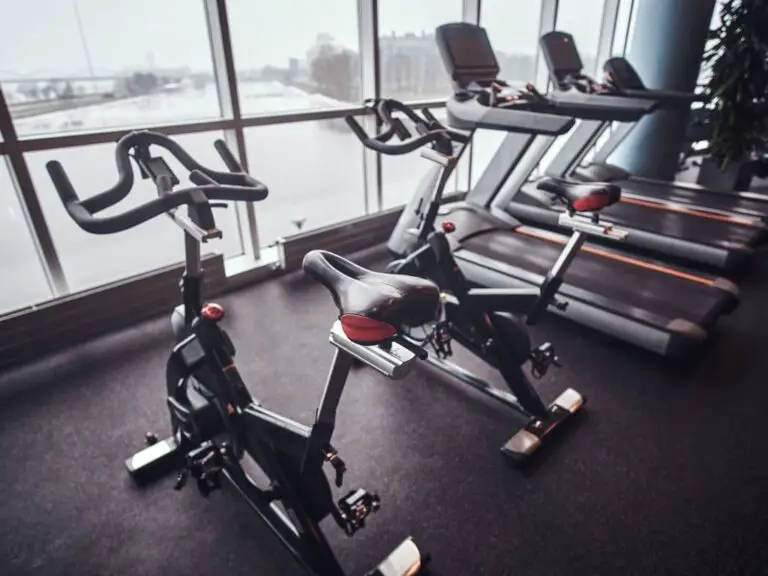What Is the Best Sitting Position for Sciatica?
Sciatica is a condition characterized by pain that radiates along the path of the sciatic nerve, which branches from your lower back through your hips and butt and down each leg. It’s typically caused by compression or irritation of the sciatic nerve roots.
Finding the right sitting position is crucial for minimizing sciatic pain and preventing it from worsening.
The best sitting position for sciatica involves minimizing pressure on the lumbar discs and maintaining a neutral spine. This can be achieved by sitting up straight with shoulders back, engaging the core, and using a supportive chair with good lumbar support. Feet should be firmly planted on the floor with knees at a 90 to 100 degree angle. Frequent breaks to walk and stretch are also beneficial.

What Is Sciatica and How Does It Affect the Sciatic Nerve?
The sciatic nerve is the largest and longest nerve in the human body. It originates in the lower back and runs through the buttocks and down the legs, innervating the muscles and sending sensory information back to the brain.
Sciatica occurs when the sciatic nerve becomes compressed or irritated, usually in the lower lumbar spine area. This can cause debilitating pain, numbness, tingling, and muscle weakness along the path of the sciatic nerve. The most common causes of sciatica include:
- Herniated discs in the lumbar spine pressing on the sciatic nerve roots
- Narrowing of the spinal canal (spinal stenosis) compressing the nerve
- Tightening of the piriformis muscle through which the sciatic nerve passes
- Injury or trauma to the nerve roots or sciatic nerve
The hallmark symptom of sciatica is radiating pain starting in the lower back or buttocks and progressing down the back of the leg. This is often accompanied by numbness, tingling sensations, and difficulty moving the leg or foot. Symptoms are typically felt on just one side of the body.
How Does Sitting Posture Impact Sciatica?
There is a clear connection between poor sitting posture and increased back pain. Sitting for long periods can put extra pressure on the lumbar discs and nerve roots, potentially irritating or compressing the sciatic nerve.
Sitting with a hunched back, slouched shoulders, or twisted spine can make back pain and sciatica symptoms worse. On the other hand, maintaining proper alignment with a neutral spine while sitting can take pressure off the nerve roots and minimize pain.
The risks of sitting improperly are increased if you already have sciatica. Bad sitting positions like cross-legged, wallet in back pocket, or slouching can further damage the sciatic nerve and its branches, potentially worsening painand numbness.
What Are the Best Sitting Positions for Sciatica?
The keys to finding the best sitting position for sciatica are minimizing pressure on the lower lumbar discs and maintaining a neutral spine. This involves proper alignment not just of your lower back, but also your pelvis and hips.
The Importance of Lumbar Spine Positioning
You want your lumbar spine to sit in a gentle “C” curve while avoiding rounding or flattening of the lower back. Using a lumbar support cushion can assist with keeping a healthy lordotic curve. Avoid slouching or hunching, which can compress nerve roots.
How to Achieve a Neutral Spine and Correct Pelvic Tilt
Keep your head in line with your shoulders and avoid poking your head forward. Engage your core muscles to maintain an upright posture. Pelvic tilt is important too – you don’t want your pelvis to rock too far forward or backward.
How to Find the Best Sitting Position for Sciatica
Here are some tips for optimizing your sitting position to minimize sciatic pain:
1. Choose a Chair That Is Supportive
Look for a chair with good back support to allow you to sit with a neutral spine. Chairs with adjustable lumbar support are ideal. Avoid soft, sinking chairs.
2. Adjust the Backrest
Set the backrest at an angle slightly reclined from vertical – around 100 to 110 degrees. This takes pressure off the lower back discs.
3. Make Sure Your Feet Are Supported
Plant your feet firmly on the floor with your knees at a 90 to 100 degree angle. Use a footrest if your feet don’t reach the floor.
4. Correct Your Sitting Posture
Sit up straight with shoulders back. Imagine a rope pulling your head up toward the ceiling. Engage your core.
5. Take Frequent Breaks
Get up at least once an hour to walk around and relieve pressure on your spine and sciatic nerve.
How Can Lumbar Support Assist in Sciatica Pain Relief?
Using proper lumbar support when sitting can help reduce sciatic pain and lower the risk of further nerve damage. A lumbar support cushion helps:
- Maintain the natural curve of your lower spine
- Keep your pelvis, hips, and shoulders aligned
- Prevent slouching, rounding, or flattening of the lower back
- Reduce pressure and compression on the sciatic nerve roots
A rolled up towel or small pillow can serve as a lumbar support cushion. But an ergonomic chair with built-in adjustable lumbar support is ideal if you sit for extended periods.
What Role Does Physical Therapy Play in Managing Sciatica?
Along with paying attention to sitting posture, working with a physical therapist can provide significant relief from sciatica pain and help prevent future flare ups. A physical therapist can provide:
- Stretches and exercises specifically designed to relieve sciatic nerve compression. These help loosen tight muscles and strengthen core stabilizers.
- Tips on proper sitting, standing, and sleep positions to take pressure off your back.
- Massage and other hands-on techniques to loosen tight muscles that may impinge the sciatic nerve.
- Advice on proper lifting and bending technique to avoid further irritating the sciatic nerve.
- Home remedies like applying heat or ice to help manage sciatic pain.
Physical therapy provides a conservative approach to managing sciatica in lieu of drugs or surgery. However, you shouldn’t substitute PT for medical treatment if your pain is severe or persists for more than a month.
When Should You Seek Medical Attention for Sciatica Pain?
Mild or occasional sciatic pain can usually be treated at home with rest, ice/heat, OTC medications, and proper sitting posture. But you should see a doctor promptly if you experience:
- Persistent or worsening sciatica and leg pain
- Numbness/weakness in your leg or foot
- Tingling, burning sensations down your leg
- Bladder or bowel changes from sciatica nerve compression
A doctor can determine if your sciatica is caused by a herniated disc, spinal stenosis, or other complication requiring intervention. Depending on the diagnosis, they may prescribe medication, refer you to physical therapy, or recommend surgery in severe cases. Don’t delay seeking medical help if your symptoms don’t improve with conservative self-care.
What Else Can You Do to Relieve Sciatica Pain?
Along with optimizing how you sit, there are other techniques for finding sciatic nerve pain relief while you determine if you need medical care:
1. Exercise – Low impact, sciatica-friendly exercises like walking, swimming, or yoga can help reduce inflammation and build core/back strength. Lifting weights with sciatica can be risky. But check with your doctor before starting a new exercise routine.
2. Heat/Ice Therapy – Use heating pads or ice packs for 15-20 minutes at a time to alleviate nerve pain and muscle tension. Try alternating heat and ice.
3. Medication – Over-the-counter NSAIDs or muscle relaxers may temporarily relieve sciatic pain. Consult a doctor about prescription medications or pain management if OTC meds don’t provide enough relief.
4. Stretching – Gentle stretches that target the piriformis muscle and hamstrings can reduce sciatic tension. Avoid bouncing or overstretching.
5. Massage – Seeing a massage therapist experienced in sciatica can loosen tight muscles putting pressure on the sciatic nerve.
Conclusion
Sciatica can cause severe, debilitating pain that greatly impacts your quality of life. While medical intervention may be necessary depending on the cause, optimizing how you sit can provide significant day-to-day relief. Paying attention to lumbar support, pelvic/spine alignment, leg positioning, and regular breaks can take pressure off the sciatic nerve and help manage symptoms.
Combining proper posture and ergonomics with other conservative care like physical therapy, stretches, and exercise works better than any one approach alone. Implementing good sitting habits, a targeted exercise routine, and timely medical treatment can help tame sciatic nerve pain so you can get back to your daily activities.
Frequently Asked Questions
-
What is the best sitting position for sciatica?
Instead of bending forward in front of the chair, sit straight up. Place your feet on the ground, and not only your toes. Do not cross your legs, or lean one way. Your knees should be straight and parallel to your hips.
-
Is there a cream for sciatica?
Many creams, gels and ointments can be used to relieve nerve pain. They alter blood flow and reduce inflammation. Preparations of4:Methyl salicylate are common topical remedies that can help with sciatica. Menthol.
-
Does walking make sciatica worse?
To tip your pelvis forward, you can walk by tilting your pelvis to the front. These walking habits can worsen sciatica symptoms by increasing irritation and compression of the sciatic nerve roots.
-
Is Climbing stairs good for sciatica?
Your sciatica pain can be worsened by a variety of activities. Running, walking, climbing stairs, straightening your legs, sitting too long, and lifting your leg from a lying place are all possible ways to worsen sciatica pain. Sometimes, laughing or sneezing can worsen the condition.
-
Does walking help sciatica?
Regular walking is an effective way to relieve sciatica pain. Walking stimulates pain-fighting endorphins release and decreases inflammation. Poor walking habits can worsen sciatica symptoms.
-
Is it better to rest or exercise with sciatica?
Sciatica Pain Relief: Exercise
-
How long does sciatica last in elderly?
Sciatica typically improves in about 46 weeks. However, it can last for up to 6 months. Talk to your doctor if the sciatica pain persists for more than six weeks.
-
Does sciatica get worse as you get older?
Because of their age, seniors are more affected by sciatica. People age and their muscles and nerves slowly degenerate. Your muscles and nerves will start to deteriorate as you age.
-
What triggers sciatica?
Sciatica is nerve pain caused by sciatic nerve compression. It can be caused by sitting too long, obesity, or wearing unfit clothing and shoes.
-
Can sciatica go away on its own?
Sciatica can come back Sciatica generally resolves itself without any treatment in a matter of a few months. It doesn’t necessarily mean that it is gone. It is possible for sciatica to recur if the root cause of it doesn’t get treated.






